How to protect electronics from emp

-
Save
Share this article: Bugoutbill.com is independent – we research, test, and rate the top products to help you make the right buying choice. We sometimes use affiliate links and may receive a small commission on your purchase. Learn more…
How do you protect electronics from an EMP attack?
We, humans, are perfectly aware of various threats to our existence, such as natural disasters, global pandemics, nuclear disasters, and economic collapse. Still, there is one that you don’t see being talked about much— an EMP.
This huge threat is absolutely capable of destroying civilization, yet the vast majority of people are unaware of it and have very little understanding of it.
In this article, we’re going to give you the rundown of what an EMP is, how you can protect your electronics from it, as well as:
- The different types of EMP;
- The most common causes of EMP;
- The various EMP protection measures you can do at home;
- Why it’s worth it to invest in a good Faraday cage or Faraday bags;
- And much more…
If this sounds interesting to you…
Then let’s get started.
Table Of Contents
Table of Contents
Recent posts
Categories
EMP Real?

-
Save
You’re probably wondering…
Is EMP real or just a figment of a conspiracy theorist’s imagination?
which is a valid question because, if we’re being honest, the thought of a single rapid event that can potentially wipe out civilization in a blink of an eye does kind of sound bizarre indeed.
But if you really want to protect your electronics, it’s important to know what you’re dealing with. First and foremost, we’re telling you right now that EMP is a real existential threat.
Still not convinced? Fair…
But here, we’re going to give you two examples that happened in real life:
Considered the most intense geomagnetic storm in world history, the Carrington Event occurred in 1859. The geomagnetic storm was named after the English amateur astronomer Richard Carrington, the person who witnessed the solar flare in his private observatory in London.
Carrington was observing the skies at the time of the incident when he noticed something that he would later describe as “two patches of intensely bright and white light” bursting from sunspots, through his brass telescope. What Carrington spotted turned out to be a massive solar flare. The solar flare culminated in the geomagnetic storm that is now known as the “Carrington Event,” the biggest of all solar storms to have struck the planet.
The Carrington Event resulted in Northern Lights and Southern Lights being seen even in Honolulu and Latin American countries such as Cuba and Chile. It also caused telegraph communications all over the world to fail, machines sparking, and green aurora lighting up the skies.
Daniel Baker from the University of Colorado’s Laboratory for Atmospheric and Space Physics claimed at a 2010 geophysics meeting that the solar flare had such a powerful impact that “people in the northeastern United States could read newspaper print just from the light of the aurora.”
While not exactly an EMP event, the Carrington event still showed us how powerful geomagnetic storms can be and how damaging they can be— and remember, geomagnetic storms caused by solar flares can trigger an EMP.
In addition to that…
In 1962, the United States conducted a high-altitude nuclear test called the “Starfish Prime.” At that time, it was the largest nuclear test that was ever conducted in space. Detonated at an altitude of 250 miles or 400 km, it resulted in an unpredictably large EMP that was immediately felt by the public.
The EMP caused power disruption in Hawaii roughly 900 miles, or 1450 kilometers, away from the detonation point and also damaged a telephone company microwave link, which cut off telephone calls from other parts of Hawaii.
As for a recent example, fortunately, there has been no recorded incident of an EMP attack in recent years – yet.
However…
In 2020, the United States EMP Task Force on National and Homeland Security released a rather frightening report stating that China is currently in possession of super-electromagnetic pulse weapons.
Furthermore, it’s also been reported just recently that Chinese military scientists are developing a hypersonic weapon, which would produce a powerful electromagnetic pulse capable of completely destroying power and communication supply lines all over the world.
What makes all this even more alarming is that the report says that China is perfectly capable of launching a first-strike attack at any time.
As the United States Chief of the Joint Chiefs Staff, Gen. Mark Milley, stated, “There is no defense against hypersonic. You’re not going to defend against it. Those things are going so fast, you’re not going to get it.”.
While we believe that the situation is not as hopeless as it sounds, the General’s statement still gives us a clue on how much of a real threat an electromagnetic pulse is.
Moreover, besides China, some of the world superpowers such as France, Russia, the United Kingdom, and the United States also possess nuclear weapons; any countries that do so have the capacity to launch an EMP attack, and we have to be prepared for any possibility.
By now, you must be wondering…
Can an EMP permanently damage an electronic device? Does an EMP attack all types of electronics? What is the best way to protect electronics when an EMP occurs?
Fret not…
We will answer all of your burning questions regarding EMP attacks and EMP protection methods below.
Let’s begin with…
So what is an EMP?
EMP stands for electromagnetic pulse. To put it simply, an EMP is a surge of electromagnetic energy that is capable of damaging power lines and electronic devices, wreaking havoc on the world’s electrical grid system, causing a loss of power, and disrupting communication. An EMP that carries extremely high amounts of energy can even destroy properties, buildings, and aircraft within a certain radius.
What can trigger an EMP?
An EMP can occur naturally or artificially.
Here are some examples of natural causes of EMP:
- Lightning strike,
- A meteoroid passing through the Earth’s atmosphere then exploding
- Geomagnetic storms during solar flares
- Coronal Mass Ejection
On the other hand, here are some man-made causes of EMP:
- Nuclear detonation, especially a high-altitude one
- Modern electromagnetic pulse weapons
What are the different types of EMP?
These are the two types of electromagnetic pulses: High-frequency electromagnetic pulse and low-frequency electromagnetic pulse.
A high-frequency electromagnetic pulse can damage even the smallest wires that are found inside your everyday electronic gadgets such as cell phone, laptops, and tablets. On the other hand, it’s the larger electronic systems in the electrical power grid, such as generators, that can be affected by a low-frequency electromagnetic pulse.
Will an EMP cause harm to humans?
The good news is that an EMP itself is not harmful to humans and doesn’t pose any threat to our health— at least not directly. However, it can do so indirectly, as it can lead to disruption of food, water, and medical systems, which can then lead to illnesses and deaths.
And that is why it’s extremely important to always be prepared for such an event, not just by protecting your electronic devices but also yourself.
Here are some of the things you can do to prepare yourself in case of an EMP event:
- Stock up on convenient foods that won’t require any electronic device to prepare, like canned foods and juices, dried fruits, bread, crackers, biscuits, powdered milk, protein bars, and honey.

-
Save
Buy non-electric tools that will be useful during an emergency situation, such as a can opener, manual mixer, French press, flashlights, and a battery-powered radio.

-
Save
Invest in high-quality and sturdy water containers and make sure that you always have a great supply of water stored in your home.

-
Save
Make sure that you always have a well-stocked first-aid kit at your home. It can be extremely helpful if the day comes when the medical and transportation systems have been disrupted by an EMP, and you can’t get any medicine and medical supplies anywhere; scary to think about, but it definitely can happen, so you might as well be prepared.

-
Save
Protect your car from an EMP by covering the ceiling and walls of your garage with plenty of layers of aluminum foil.
Is an EMP capable of causing permanent damage to your electronic devices?
While the level of damage will vary depending on the intensity and strength of the EMP, yes, an EMP, particularly a high-energy one like a nuclear EMP, is perfectly capable of permanently destroying electronic devices within its line of sight if the electronic devices are unprotected.
Which type of electronics will survive an EMP?
Primarily, an EMP attacks electronics with solid-state electronic controls; therefore, electronics that don’t function with an electronic circuit will most likely be safe.
Here are some of the electronic devices that have a high survival rate during an EMP attack:

-
Save
Solar panels – Depending on the severity of an EMP, most solar panel will not be affected. The catch is, some damage is still possible when we take into consideration their supporting equipment, such as the solar control charger, wires, and inverter, but it will most likely be minimal.
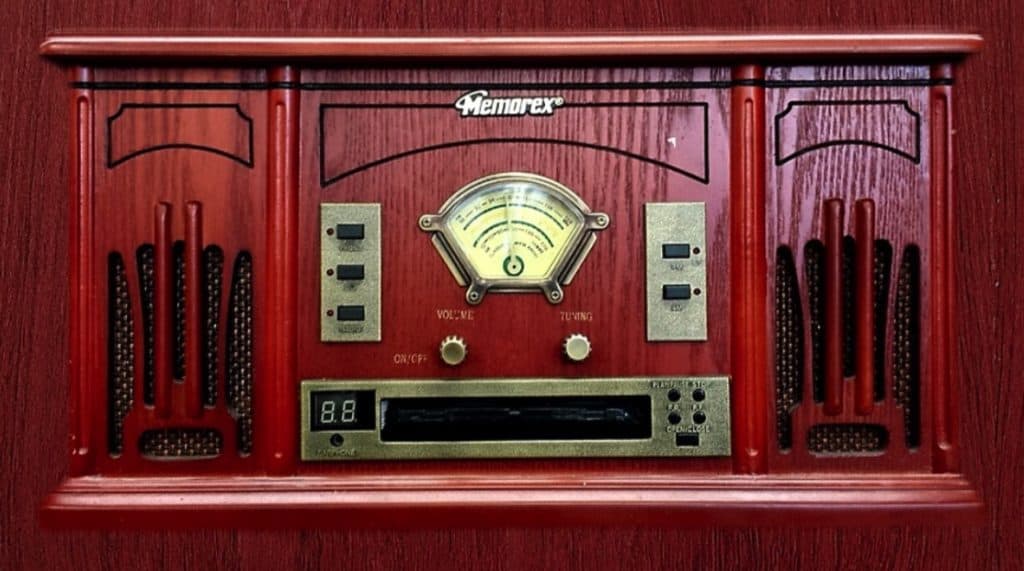
-
Save
Vintage electronics – Have an antique radio or television at home that uses vacuum tubes? Don’t throw them out just yet; they will most likely still work. Vintage electronic devices have a high probability of surviving an EMP for the reason that they don’t use solid-state electrical components.
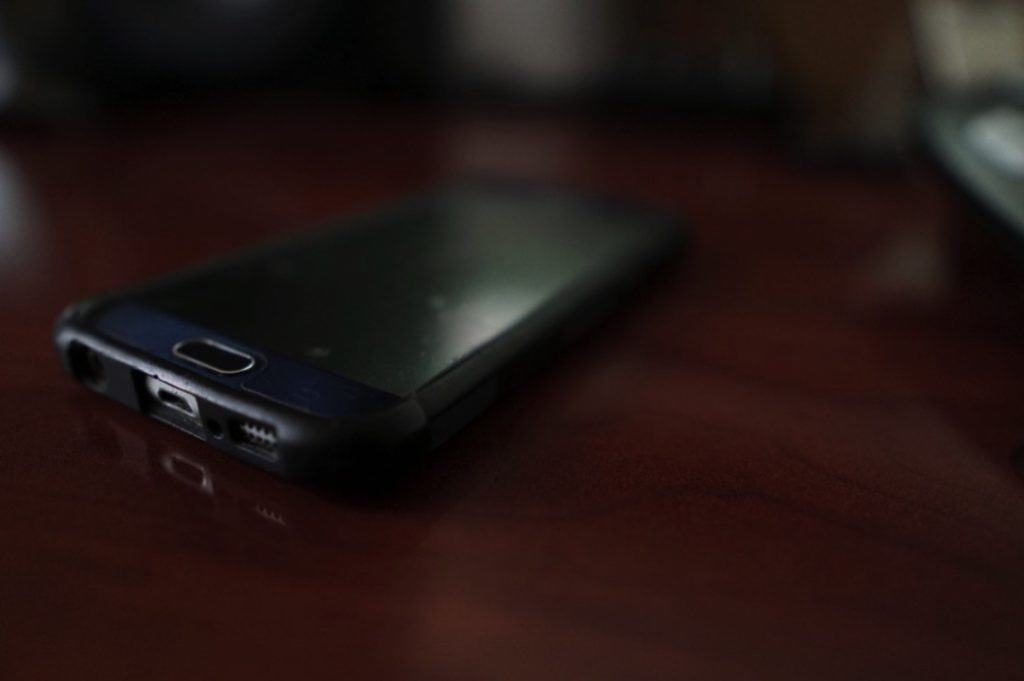
-
Save
Small and portable electronic devices – The main reason that small, portable devices like smartphones, tablets, flash memory devices, pagers, and radios are most likely to survive an EMP is that they’re much easier to store in Faraday cages, Faraday bags, Faraday boxes, or EMP bags and thus be well-protected.

-
Save
Old car models – According to conventional wisdom, older cars that were manufactured pre-1980s are much more likely to keep working even after being subjected to an EMP attack. It’s because they’re not reliant on electronics like the majority of modern cars are.
And now we’ve established that an EMP is a legitimate threat and can damage your valuable electronics— and more.
You know now what an EMP is capable of, so it’s time to answer the most important question:
How can you protect your electronics from an EMP?
We will always be of the opinion that the best way to protect your electronic devices is by using a Faraday cage, Faraday bag, or a Faraday box which we will get into later.
However, EMP is sudden, unpredictable, and can happen at any time.
No Faraday cages or bags on hand during an EMP attack? No problem; the electromagnetic shielding technique is the way to go.
Electromagnetic shielding refers to the method of using barriers constructed from conductive or magnetic materials to block the fields and reduce the electromagnetic field in space.
There are plenty of DIY options you can choose from in order to execute this technique. Also, you can build makeshift Faraday cages out of many household items.
Here, we’ve listed some of the most common ways you can use to EMP-proof your electronic devices at home.
Basic DIY EMP Protection You Can Try At Home
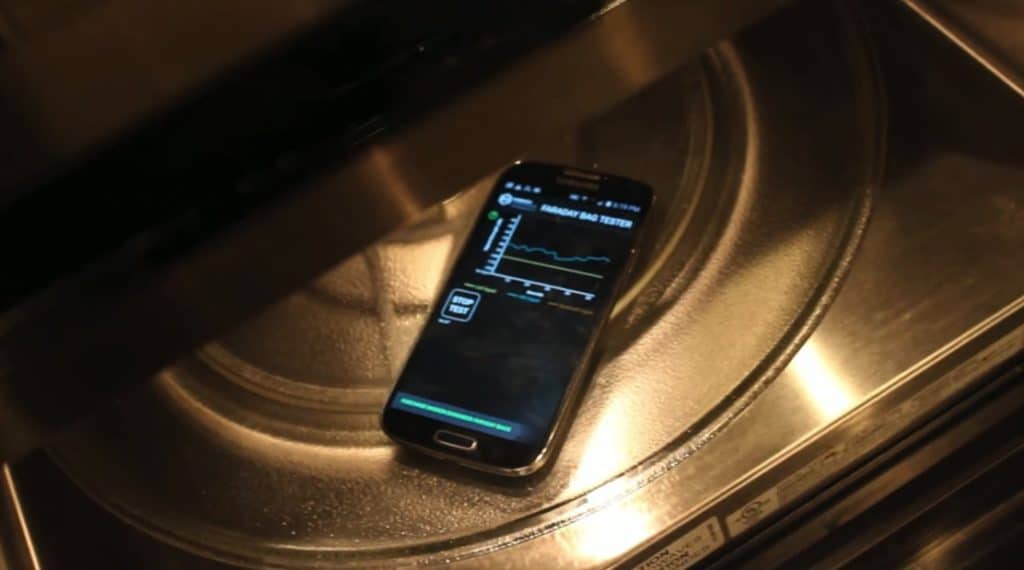
-
Save
A really easy EMP shielding method is to use aluminum foil. Simply get your electronic device and cover it in layers of non-conductive insulating materials such as paper or cloth; it’s important that the foil must not come in direct contact with the device.
If a part of your device is protruding, it’s best to use something thicker, like a cardboard or an envelope; that way, you can avoid the protruding part from poking through the foil. After that, you can now wrap it in at least three layers of foil, making sure there are no gaps. It’s best to add more layers of foil if you’re not going to place the electronic device inside any box or cage.
Another way to use foil as electronic protection is to grab a shoe box, or any kind of box, as long as it’s dry, sturdy, and has a lid.
Cover as much of the box as possible with continuous, uninterrupted tinfoil, even the inside of the lid; you can make this process easier by measuring the height and length of the box before starting. Once the box is completely covered, secure the foil with scotch tape.
You can now place your electronic device inside the box. Close the lid tightly, and if you want an added protection, securing it with aluminum tape is a good idea. This method works by the foil in the lid and on the box, creating a barrier once they come in contact with each other, which will divert the energy emitted by an EMP around the electronics stored inside.
Whatever aluminum foil method you choose, we highly recommend that you pick a heavy-duty aluminum foil; the thicker it is, the better.
Use A Steel Garbage Can With A Lid

-
Save
Garbage cans are one of those household items most of us already own, and yes, it can protect your electronics from EMP damage— as long as it’s a galvanized steel trash can.
If yours is not, go ahead and buy one, which is easy to find in your local hardware store; the metal trash can will act as the main body of your makeshift Faraday cage. Choose the size of the galvanized trash can depending on the devices you’re going to place inside. Oh, and make sure that the trash can has a tight-fitting lid made from metal as well.
Next, use aluminum tape to seal the trash can’s seams. While a galvanized steel trash is practically impermeable, you still want to increase security. This step is not extremely necessary, but it’s vital that there’s not even a tiny gap that can lessen the protection provided by the metal container, and this step ensures that.
Another thing you might possibly overlook is the trash can’s handle. It is attached to the container through holes where it passes through into the container, and those little holes can allow for EMP to get inside and damage your electronics. Avoid this by not forgetting to also cover them with aluminum tape.
You have to make sure that the device won’t touch the interior of the trash can, so the next step is to get an insulating material to line the inside of the trash can; a cardboard would be ideal for this job. Now put down the aluminum tape, get a masking tape instead, and use it to secure the cardboard.
Once the interior of your trash can has been fully lined with cardboard, you can now put your electronics inside and then cover the trash can with the metal lid. The metal-on-metal contact will provide excellent protection when EMP strikes. For further EMP protection, seal the trash can tightly with more aluminum tape.
A Metal Roof or Solar Paneled House

-
Save

-
Save
A really good way to ensure that your house itself will provide great protection for your electronics in case of an EMP event is to use metal roofs or install solar panels in your house.
Put Devices In The Microwave

-
Save

-
Save
If you think your microwave oven can only be used to heat up your favorite foods, think again because yes, it can also be used as an EMP shield.
The first step to making a Faraday cage out of a microwave oven is to take an aluminum tape and cover all the small holes inside the microwave oven. Like we’ve mentioned above, you always have to make sure that your electronics won’t come in direct contact with the interior or walls of your makeshift Faraday cage, so the next thing you want to do is to get cardboard and place it inside the microwave oven.
By now, you already know that any gaps and holes are a no-no as they allow EMP to get inside your protective container and damage your electronics inside. Microwave ovens, however, have small holes in their window, which you will have to cover using a piece of aluminum foil. Make sure that the size of the aluminum foil is enough to cover the entire window of the microwave oven. Don’t also forget to wrap the aluminum foil around the frame so that you can be sure that there will be no gaps whatsoever where EMP can enter.
Afterward, lay your most sensitive electronics into the cardboard inside the microwave oven. Before you do that, though, do make certain that the microwave oven you’re using is either not working anymore or it’s completely turned off— you don’t want to fry your electronic equipment inside!
And there you have it, the easiest and most effective at-home DIY methods to EMP-proof your cell phones, HAM radios, charging devices, and other important electronics in case of an EMP surge.
Whatever at-home DIY method you choose, just keep in mind that it’s crucial that the device doesn’t touch the interior of your chosen box or container, so keeping a supply of non-conductive insulating materials is also important when it comes to electromagnetic shielding.
Even so…
While the DIY methods we’ve mentioned above are definitely great alternatives to a Faraday cage, we will always highly recommend that you get the real thing if possible.
So what is a Faraday cage, and what makes it more effective than the aforementioned methods?
Let’s dig a little deeper.
The Real Solution – A Faraday Cage
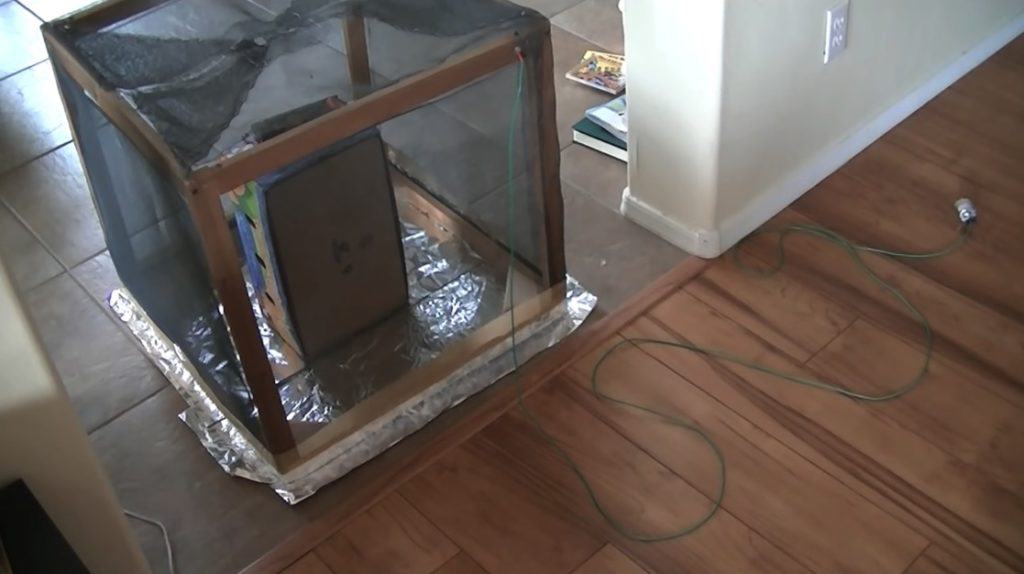
-
Save
Named after the scientist Michael Faraday, who invented it in 1836, a Faraday cage, also called a Faraday shield, is a protective enclosure or container that keeps out electromagnetic fields. A Faraday cage is constructed with materials that conduct electricity, such as conductive metals (steel, copper, aluminum, silver, gold, and brass) and wire mesh. Its construction is precisely what makes it work as an EMP shield – because an object that is made from conductive materials will always keep electromagnetic radiation out.
A Faraday Box
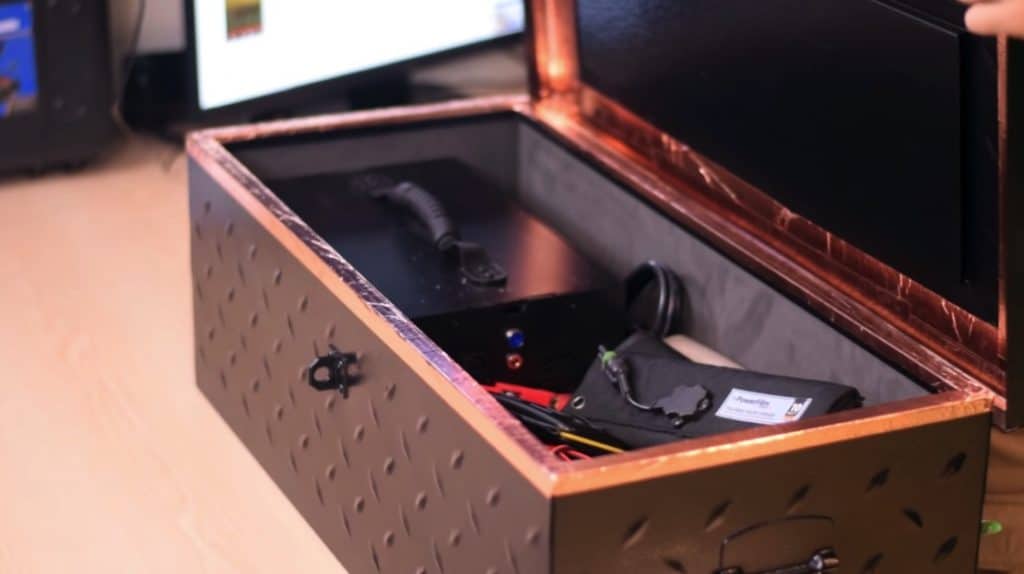
-
Save
All this being said, a simple Faraday cage has limited space, so you will have to make a decision on which electronics to prioritize.
Here are our recommendations on which electronic devices are best to put in your Faraday cage:

-
Save
Communications equipment such as smartphones, pagers, battery-powered walkie-talkies, CB radios, HAM radios, tablets, and laptops.

-
Save
- Digital cameras
- Digital watches
- LED lights
- A small generator
- Charging devices
- Flash memory devices
- Power inverter
- Electric-powered medical equipment
- Toolbox
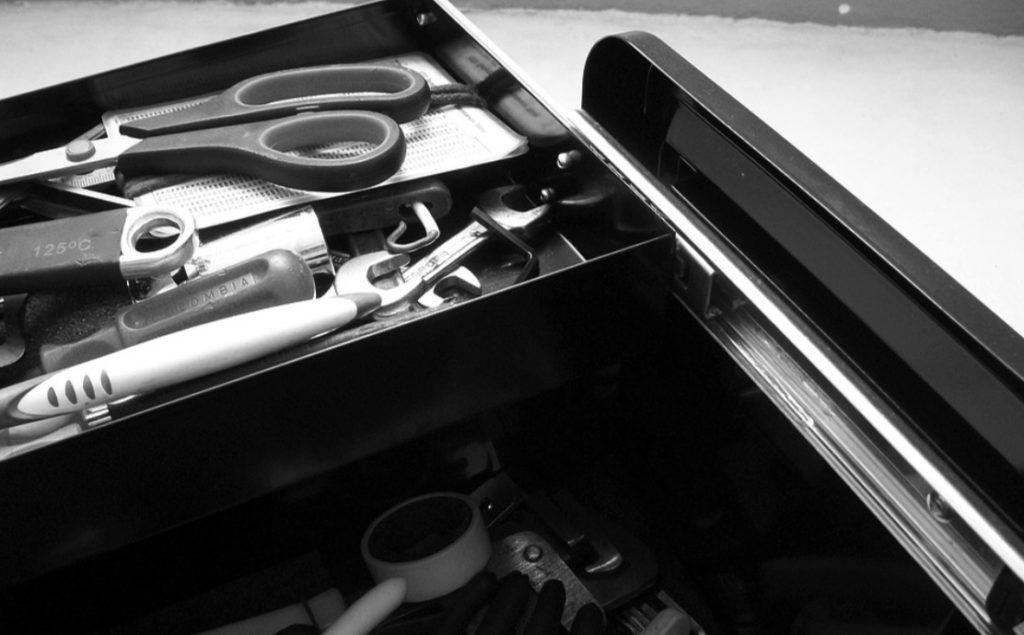
-
Save
Related: How To Make Char Cloth
Conclusion - How To Protect Electronics From EMP

-
Save
By now, you’re already aware that an EMP is very much a real thing and can cause all kinds of damage to your electronics. Beyond that, an EMP can throw our civilization back into the Stone Age in a matter of seconds.
While the utter unpredictability of EMP attacks is bad news, arming yourself with knowledge about proper EMP preparation and using the right EMP shields will give you and your precious electronics a fighting chance to survive any EMP threats unscathed.
Faraday cages, Faraday boxes, or an EMP bag are the best tools to invest in in order to protect your important electronics effectively. If you don’t have one around, employ the EMP shielding methods that we featured in this article, combine that with preparing ample food, water, and medical supplies, and you’re good to go.
Just make sure to do the techniques properly!
We hope that our article has convinced you to recognize electromagnetic pulse as a legitimate existential threat and to do your best to prepare for EMP threats.
If you found this article helpful, don’t hesitate to share it with your family, friends, and loved ones so that they too can be safe and have well-protected electronics.
Keep safe always!
Similiar Posts
Community Cuisine: MREs and Grassroots Food Movement Engagement
Interested in the connection between community cuisine, MREs, and the grassroots food movement? This article
The Future of Food: MREs and Their Contribution to Systemic Change
Meal, Ready-to-Eat (MRE) is a convenient and portable food option that has been gaining popularity
On the Frontlines of Food Change: MREs in Food System Transformation
In a context where food system transformation is a prominent topic of discussion concerning sustainability

-
Save
About Author
Lorem Ipsum is simply dummy text of the printing and typesetting industry. Lorem Ipsum has been the industry's standard dummy text ever since the 1500s, when an unknown printer took a galley of type and scrambled it to make a type specimen book. It has survived not only five centuries, but also the leap into electronic typesetting, remaining essentially unchanged.
Author Name -

-
Save

